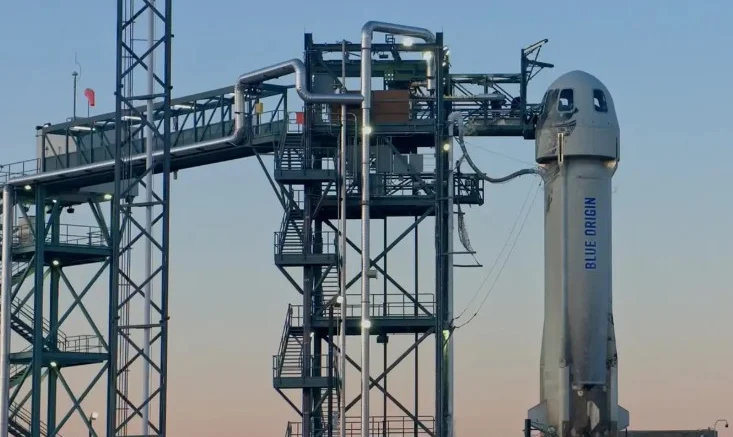AeroMorning, November 24, 2025
In 2025, SpaceX’s dominance in heavy-lift launch services is facing real competition from Blue Origin. The rivalry is intensifying — and not just symbolically.
Strategic Developments and Market Context
On November 18, 2025, Blue Origin moved a New Glenn booster to Cape Canaveral, signalling a concrete advancement in its long-delayed heavy-lift program. Around the same time, SpaceX experienced a setback: one of its next-generation Starship boosters failed a gas-system pressure test in Texas, was removed from the launch pad, and is now under further inspection. As noted in a recent guest commentary on AVBrief, this juxtaposition could mark a turning point in the market.
Blue Origin’s strategy appears more measured: slower development, but steady progress and increasing credibility. The New Glenn launcher is partially reusable — its first stage, powered by seven BE-4 engines, is designed to return to a sea platform called “Jacklyn.” According to public sources, the rocket can carry up to 45 tonnes to low Earth orbit (LEO) and 13 tonnes to geostationary transfer orbit (GTO) in its baseline configuration. A more powerful variant, called New Glenn 9×4, has been announced, with nine BE-4 engines on the first stage and four BE-3U engines on the second, targeting even larger payloads.
According to the US Space Force Almanac 2025, the New Glenn is rated to deliver up to 45,000 kg to LEO.
Economic Stakes and Contracts
The economic and strategic stakes are high. Blue Origin has already secured US Space Force contracts: under the National Security Space Launch (NSSL) Phase 3 program, it was awarded seven missions worth $2.3 billion for the New Glenn, as part of a combined $13.5 billion award alongside SpaceX and ULA (= United Launch Alliance = Boeing et Lockheed Martin).This demonstrates that Blue Origin is not just playing in the commercial market, but also positioning itself as a serious player in national security launches.
Furthermore, Blue Origin’s investment in New Glenn has been immense, spanning several years and billions of dollars. While exact internal figures are not publicly disclosed, building a heavy-lift reusable rocket with advanced engines and sea-landing capability is a capital-intensive endeavour.
Market Dynamics and Demand
The heavy-lift market continues to expand. Demand is strong from commercial satellite constellations, defence customers, and civil agencies. Blue Origin’s new rocket provides a credible alternative to SpaceX’s Falcon Heavy and future Starship, diversifying options for customers who may value different risk profiles, launch cadences, or redundant capacity.
Blue Origin’s more cautious tempo may be turning into an advantage. Its infrastructure at Cape Canaveral, combined with certifiable performance, allows it to target launch customers who might prefer reliability and predictability over sheer speed.
For SpaceX, the pressure is real. While Starship remains a transformational system, any disruption or delay could open the door to competitors. Blue Origin’s New Glenn, now operational and backed by both commercial and government contracts, could represent the first truly viable non-SpaceX alternative in the heavy-lift launch market.









Be the first to comment on "Growing Pressure on SpaceX: Blue Origin’s New Glenn Gains Momentum"